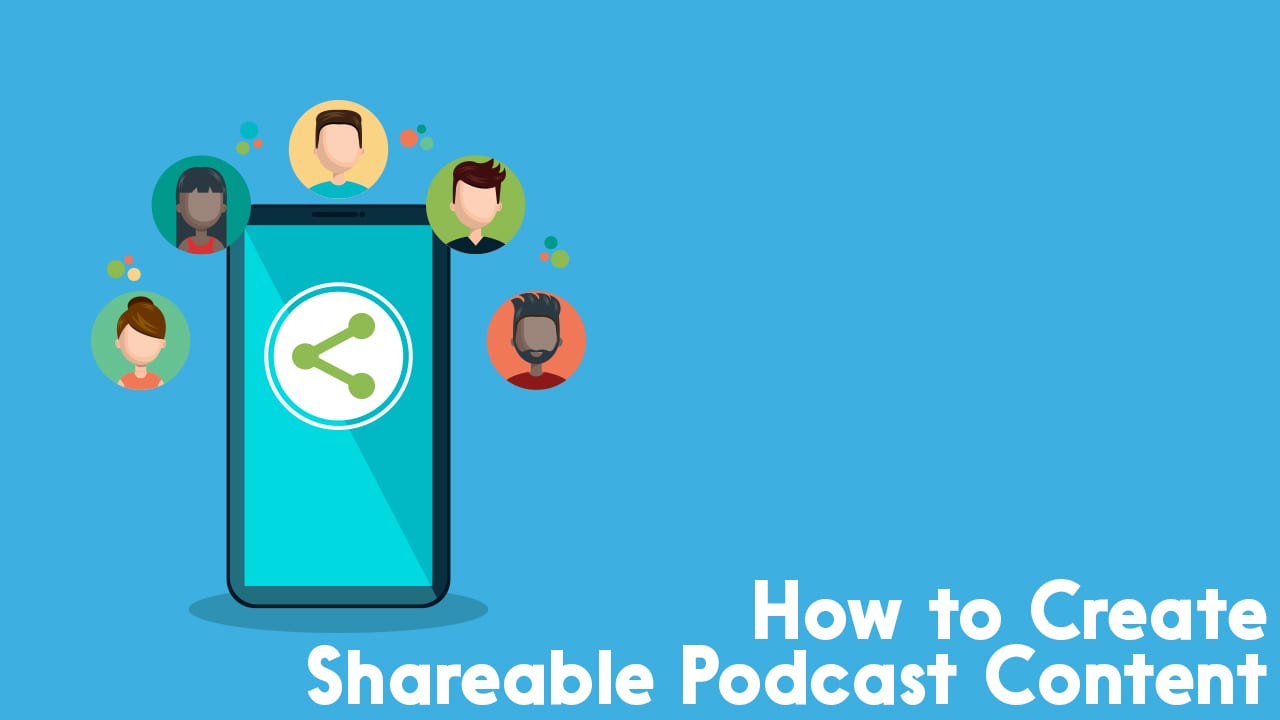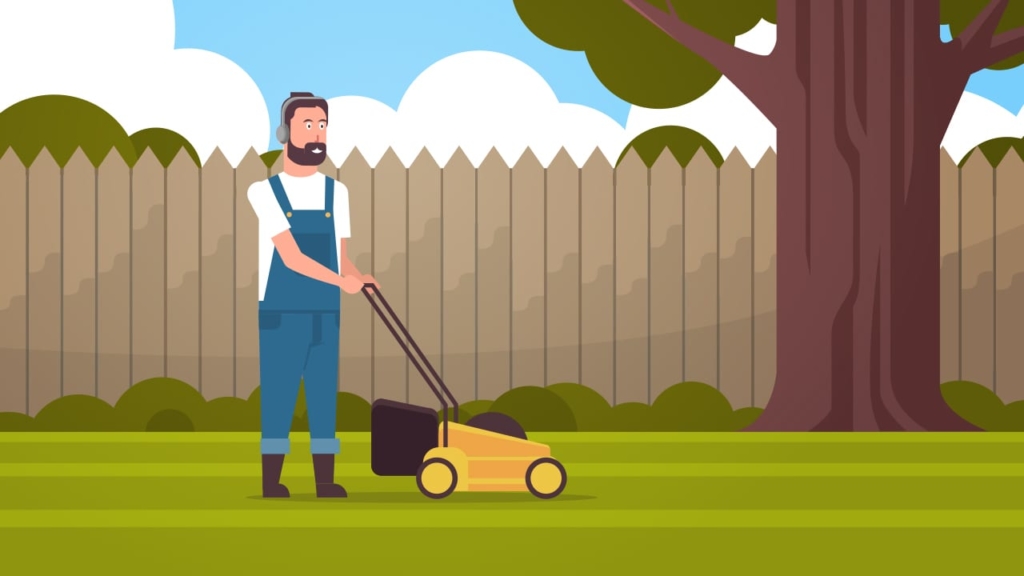How to Create Shareable Content

If you create shareable content, then every one of your listeners is a potential marketer for your podcast.
In this article, I’m going to talk about making podcast episodes that others feel compelled to share. This doesn’t just apply to podcasting, either. If you run a blog or video series, this is every bit as relevant to your chosen medium.
These tips are heavily inspired by a great book called They Ask You Answer. That’s an affiliate link, but this is a book we recommend to people a lot. If you find this post useful, then it’ll be worth your while to grab yourself a copy.
Back to creating shareable content, though. As ever, the subject matter of your episodes will depend on your topic and niche. The following suggestions are more like frameworks for them. Let’s dive in.
The List
Putting a list together is a great way to have your episode shared by the people you mention in that list.
Again, this starts with your topic. But here are some questions that might help get you started.
What are your top 5 favourite podcasts in your niche? What are the top 7 blogs writing about the same subject you cover? Or what about the 10 books that inspired you the most in your own area of expertise?
Running through a list and talking about each thing you’ve chosen to include is a fun episode to do. More importantly, your audience will love it, because it gives them loads of other things to check out that sound interesting and helpful to them.
Lists aren’t restricted to talking about other content channels. Another approach is to look at the frequently asked questions you get from your audience.
For example, if you run a gardening podcast, and people are asking about the best veg to grow in winter, you can create an episode titled, “Best 10 vegetables to grow this winter”.
Or, if you run a writing podcast, a lot of people might ask “what writing tools do you use?” You can respond by creating, “Top 7 tools for authors and writers”.
Once you’ve put an episode like this out, be sure to tell the folks behind each channel, product, or service. There’s a good chance they’ll share it, and that can result in their own audience checking out your show.
The Comparison
A popular type of shareable content in a niche that involves any type of gear or equipment. The idea is pretty simple: try out two similar (competing) products, and give your feedback.
In podcasts about podcasting the “microphone shootout” (as in an Old West action movie) is a common episode. The host will compare things like the price, durability, functions, features, aesthetics, and sound quality of two different microphones.
This can apply to almost any niche, however, from cycling and fitness, to gaming or knitting. If you know your topic well enough, it should be pretty easy to come up with a few potential episodes in this format.
So, why is this type of episode so shareable? Mainly because people want to appear informed and helpful, and will retweet posts like this, often even without clicking on them. Whilst that alone certainly doesn’t give you more listeners, it gets you in front of more potential listeners. And that’ll never do you any harm when it comes to growing your audience!

The Review
Instead of comparing one product to another, you can instead focus exclusively on one tool, piece of equipment, or gear. The review can extend far beyond that, though. You can review films, books, albums, websites, places, or even other podcasts. Again, it all comes down to your topic. What kind of reviews are going to appeal to – and ultimately help – your audience?
Creating a review can be tricky at times. You need to keep your integrity by being honest, but you also don’t want to come across as ultra-negative – especially if you’re reviewing something someone else does as a labour of love.
Carefully choose what you’re going to review. Weigh up the pros and cons. Try to find at least some positives in something you don’t like, and look for any weaknesses in things that initially might appear perfect.
The Case Study
A case study differs from a review because it uses examples of someone doing something. Or, an event taking place.
A cycling podcast, for example, might take a deep dive into how one cyclist prepared for and won a big tournament. A podcast about podcasting might do a case study on how a certain show reached a million downloads. Or a football podcast might chronicle the journey of a team of underdogs from a small village who won a national trophy.
Doing a case study is a great opportunity to tell a story. Stories are the ultimate and oldest form of shareable content.
In your story, you want to hit certain beats. You can almost think of it as a film.
Imagine a case study relevant to your topic. Now, run through the following questions.
- Who is the hero, or ‘protagonist’?
- Why will your audience relate or be sympathetic to them?
- What is their ambition?
- What are their main motivations?
- What are the big obstacles in their way?
- What are they doing differently?
- At what moment does it look like they’ve failed? The classic “all is lost” moment that’s found in almost every film.
- How do they turn things around?
- How do they achieve their goal? Or maybe they fall short. If so, why was that?
- What is the outcome of it all? What impact does it have? What changes take place because of it?
This is the framework to tell a story that’s compelling, and also valuable in the lessons that it teaches. If done well, people who hear it will want to share it without a second thought.
Costs
If someone is planning to buy something these days, chances are they’ll do a bit of pricing research online, beforehand. Why not be the person they go to for the info they need?
This is where “how much does X cost?” episodes can help you to grow your audience. So, what are the products and services people buy in your podcast’s niche?
For example, a nutritional therapy podcast might run an episode titled “how much does a food sensitivity test cost?”. Or a show about living off-grid might run one about, “how much does a wood burning stove cost?”.
In these episodes, you’d tend to break everything down with options for each budget. You may even use affiliate relationships, or create one of the products or services yourself. That’s absolutely fine, so long as you’re up front about it from the beginning!
How-To
This is the classic problem-solution pairing. What are your audience struggling with? What do they need help with?
You might already have a decent idea of this, based on the types of questions they ask you. If you need more help on this front though, consider running an audience survey.
Starting your title with, “How to” is arguably the most effective way of getting folks to click on it. You might say “well, that’s just clickbait”, but is it really “just clickbait” if it delivers what it promises?
Here are some examples of ‘how-to’ episodes that’ll have their target audience hitting play without a second thought:
- How to become a scratch golfer
- How to improve your sleep quality
- How to talk to your kids about grief
- How to pass your driving test
Creating Shareable Content
Now that we’ve gone through some ideas for creating shareable episodes, you should have plenty to go and think about. Try writing down 2 or 3 ideas for each type of content within your own niche or topic. What kinds of lists, comparisons, reviews, case studies, pricing, or ‘how-to’ episodes would be valuable to your audience?
An important next step for creating shareable content is to make sure your website is up to scratch, too. That’s what I’d like to cover next. So head on over to getting the most from your podcast website and let’s dive into that.
